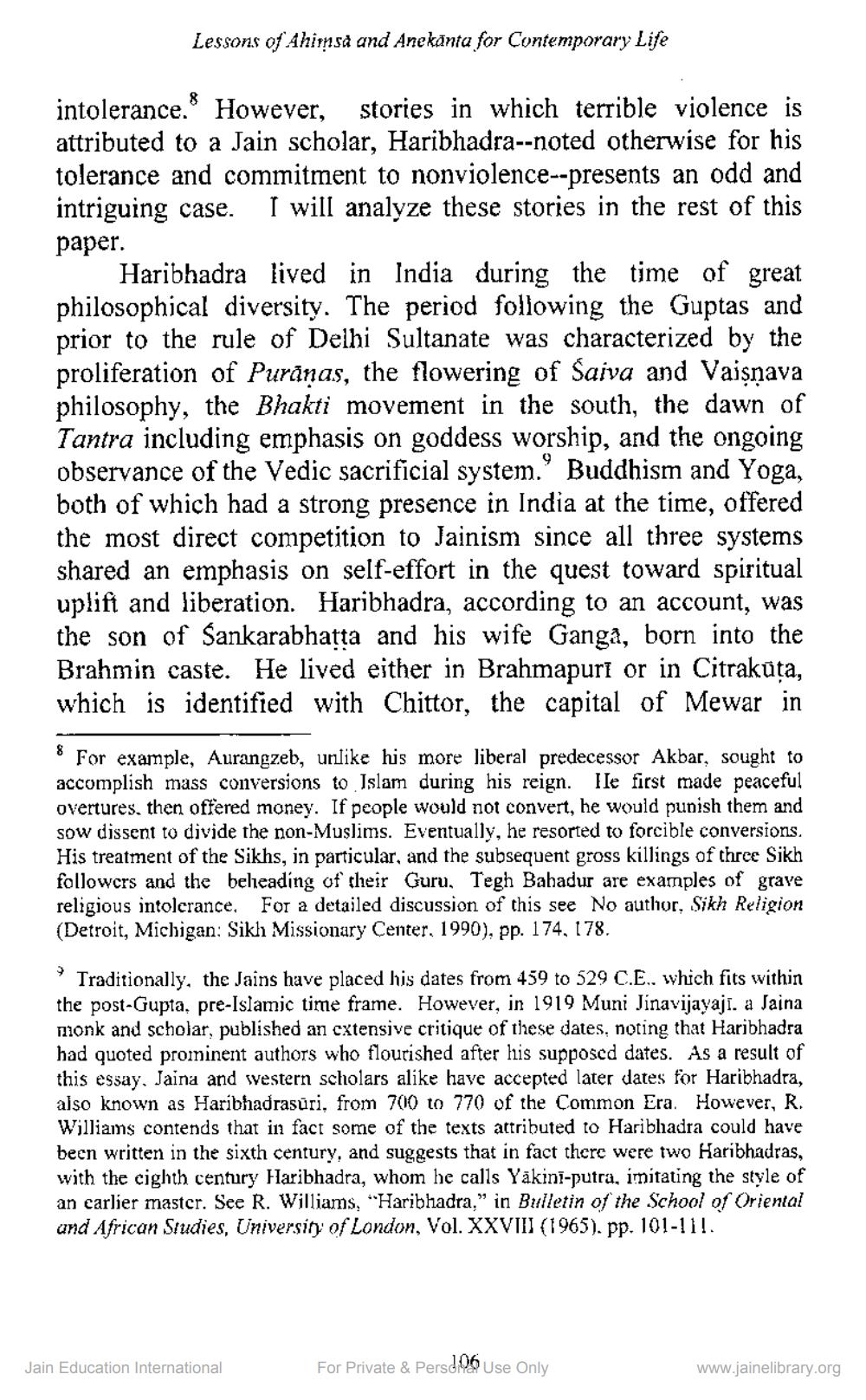Book Title: Religious Dissonance and Reconciliation The Haribhadra Story Author(s): Christopher Key Chapple Publisher: Z_Lessons_of_Ahimsa_and_Anekanta_for_Contemporary_Life_014006.pdf View full book textPage 5
________________ Lessons of Ahimsa and Anekānta for Contemporary Life intolerance. However, stories in which terrible violence is attributed to a Jain scholar, Haribhadra--noted otherwise for his tolerance and commitment to nonviolence--presents an odd and intriguing case. I will analyze these stories in the rest of this paper. Haribhadra lived in India during the time of great philosophical diversity. The period following the Guptas and prior to the rule of Delhi Sultanate was characterized by the proliferation of Puranas, the flowering of Saiva and Vaisnava philosophy, the Bhakti movement in the south, the dawn of Tantra including emphasis on goddess worship, and the ongoing observance of the Vedic sacrificial system. Buddhism and Yoga, both of which had a strong presence in India at the time, offered the most direct competition to Jainism since all three systems shared an emphasis on self-effort in the quest toward spiritual uplift and liberation. Haribhadra, according to an account, was the son of Sankarabhatta and his wife Ganga, born into the Brahmin caste. He lived either in Brahmapuri or in Citrakūta, which is identified with Chittor, the capital of Mewar in For example, Aurangzeb, unlike his more liberal predecessor Akbar, sought to accomplish mass conversions to Islam during his reign. He first made peaceful overtures, then offered money. If people would not convert, he would punish them and sow dissent to divide the non-Muslims. Eventually, he resorted to forcible conversions. His treatment of the Sikhs, in particular, and the subsequent gross killings of thrce Sikh followers and the beheading of their Guru, Tegh Bahadur are examples of grave religious intolerance. For a detailed discussion of this see No author. Sikh Religion (Detroit, Michigan: Sikh Missionary Center. 1990), pp. 174, 178. Traditionally, the Jains have placed his dates from 459 to 529 C.E.. which fits within the post-Gupta, pre-Islamic time frame. However, in 1919 Muni Jinavijayaji. a Jaina monk and scholar, published an extensive critique of these dates, noting that Haribhadra had quoted prominent authors who flourished after his supposed dates. As a result of this essay. Jaina and western scholars alike have accepted later dates for Haribhadra, also known as Haribhadrasuri, from 700 to 770 of the Common Era. However, R. Williams contends that in fact some of the texts attributed to Haribl been written in the sixth century, and suggests that in fact there were two Haribhadras, with the cighth century Haribhadra, whom he calls Yakini-putra, imitating the style of an earlier master. See R. Williams, "Haribhadra," in Bulletin of the School of Oriental und African Studies, University of London, Vol. XXVIII (1965), pp. 101-11!. Jain Education International For Private & Persd06 Use Only www.jainelibrary.orgPage Navigation
1 ... 3 4 5 6 7 8 9 10 11 12 13 14 15 16
